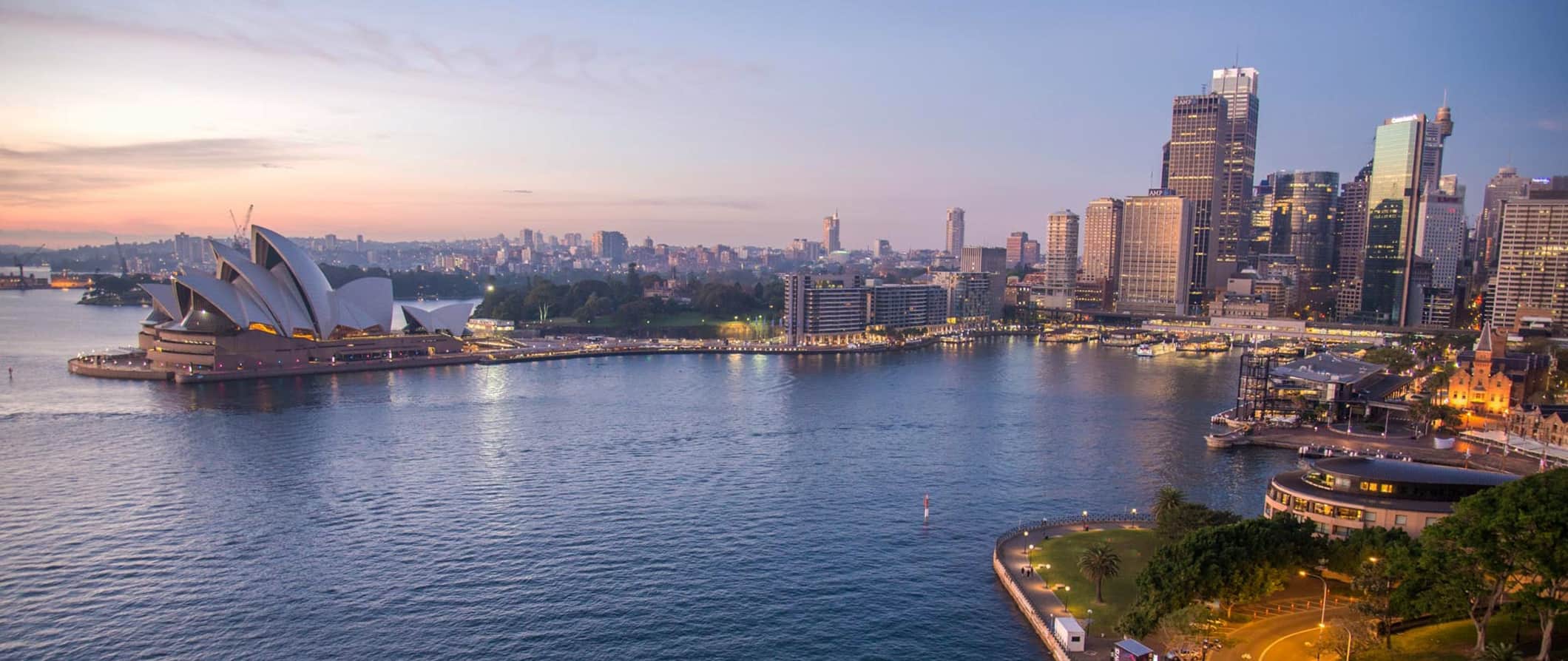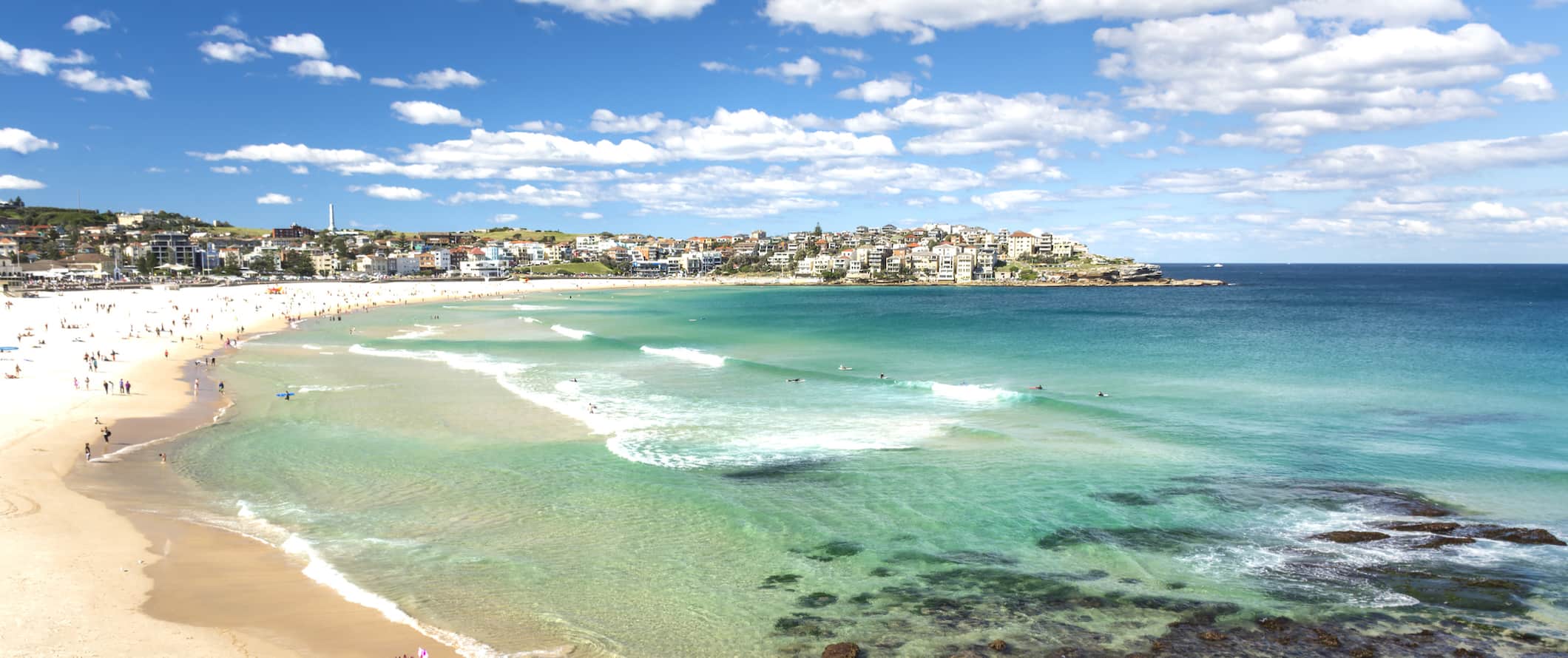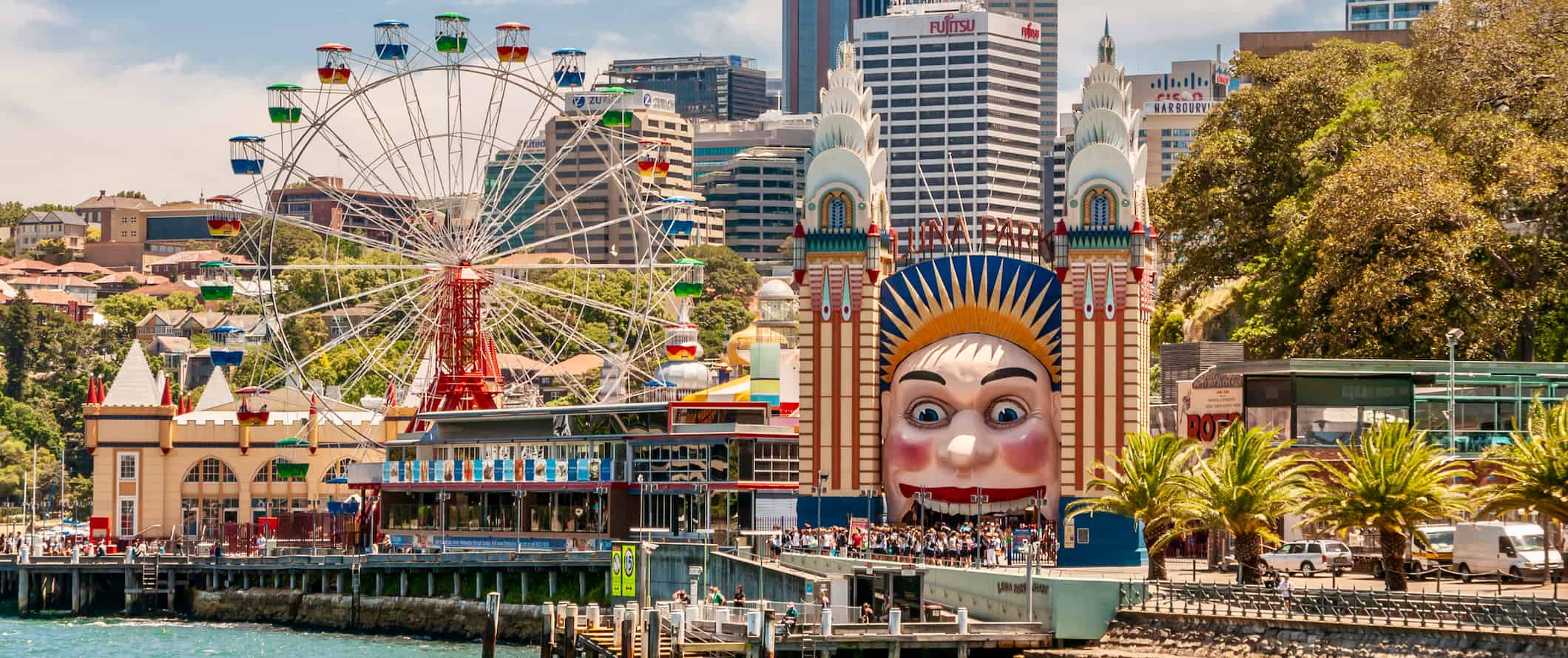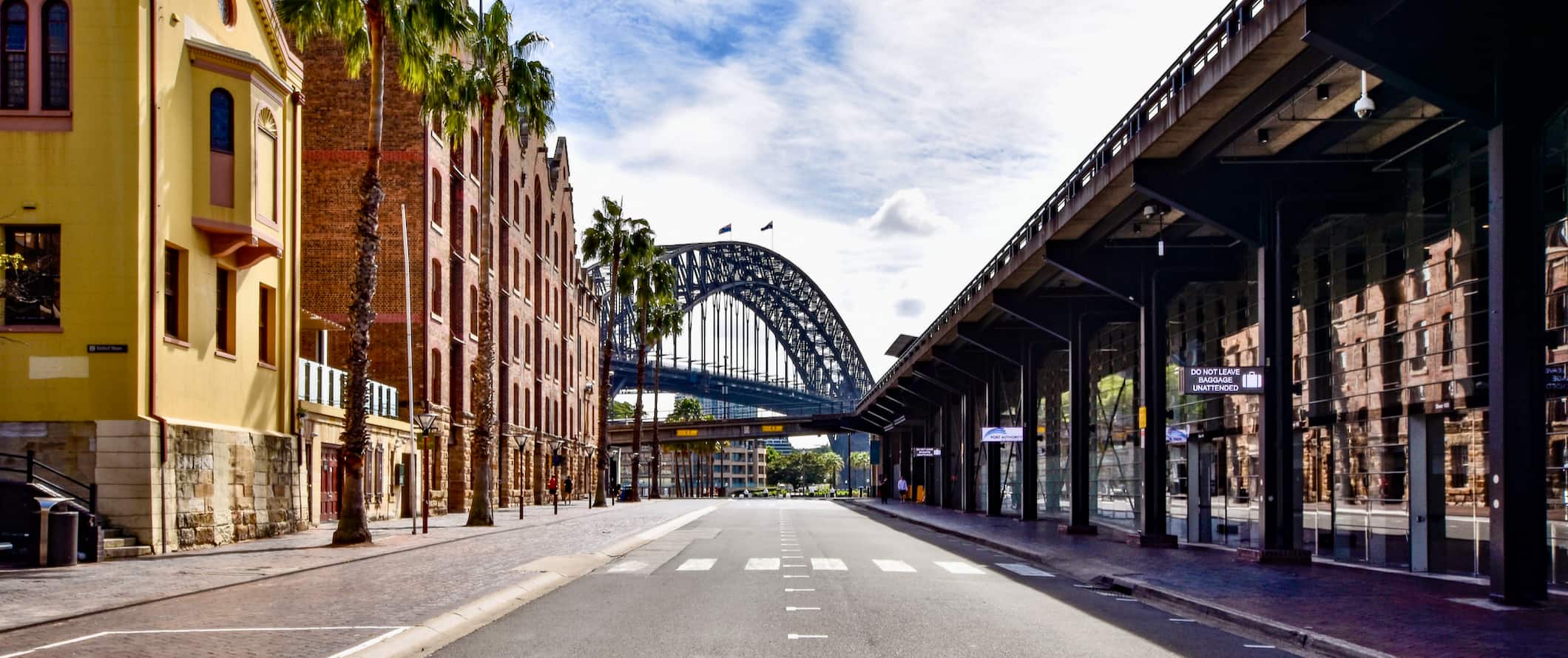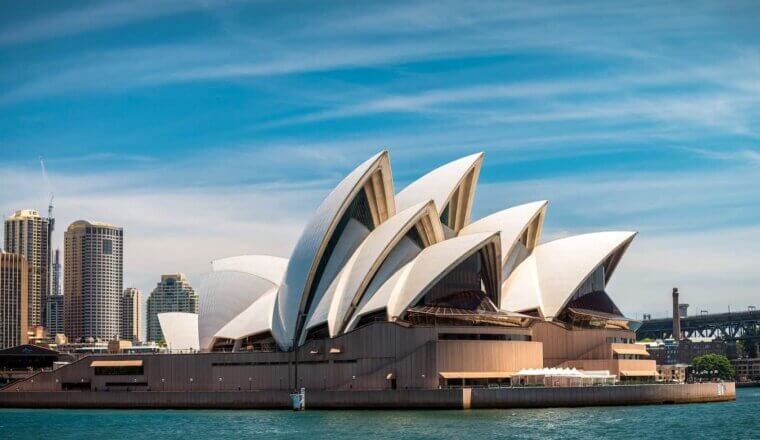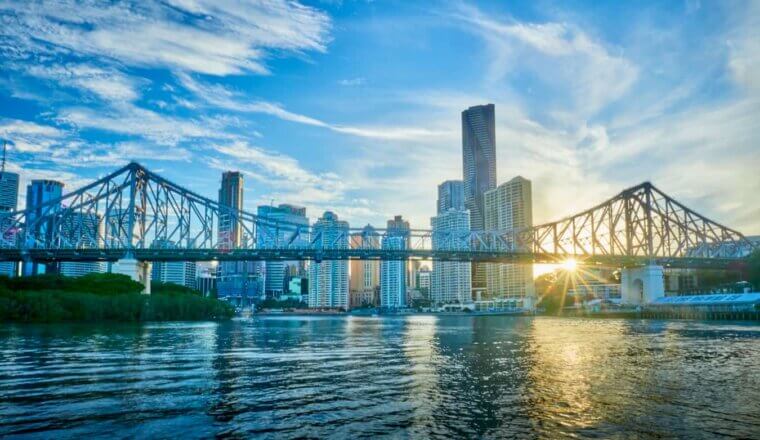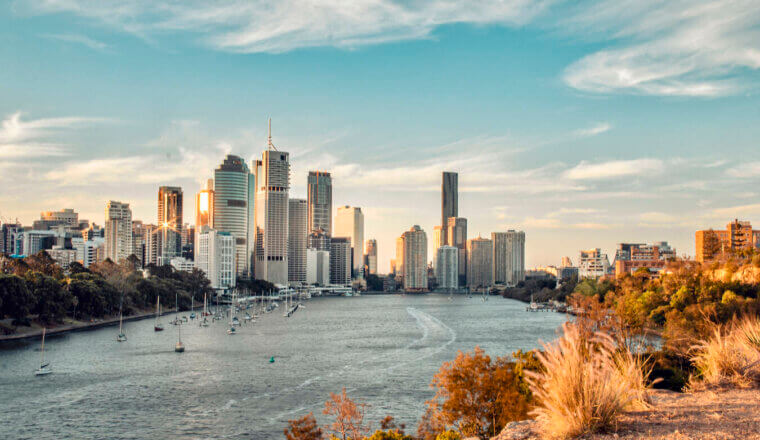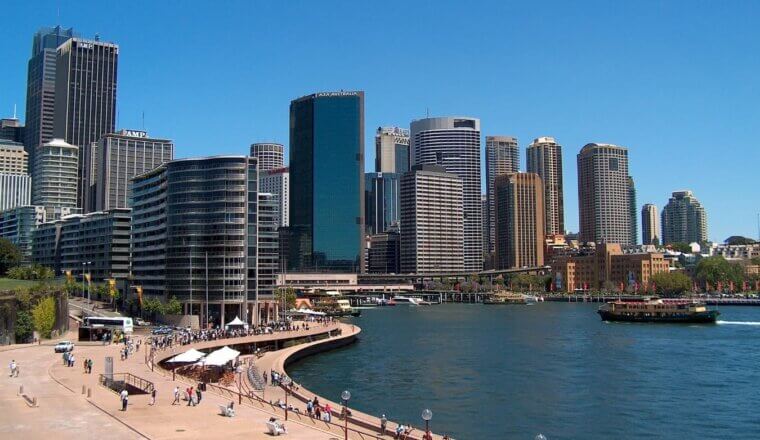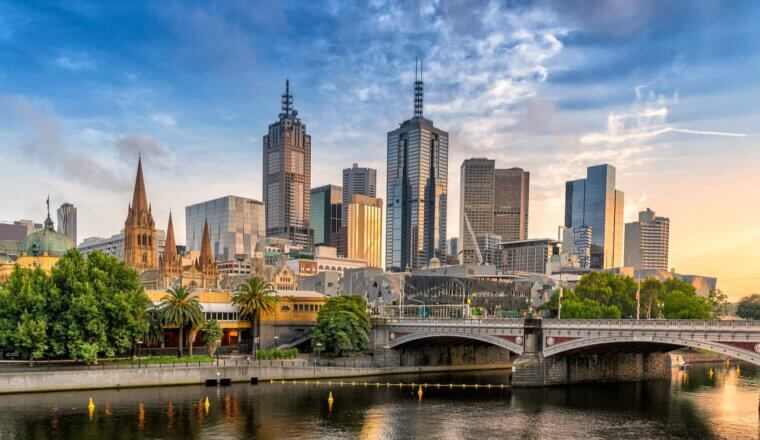Sydney is a cosmopolitan city surrounded by stunning beaches, iconic architecture, and acclaimed wine regions.
Besides being Australia’s largest city (over 5 million people live here, almost 20% of the entire country), Sydney is also its most visited. Though, contrary to popular belief, not the country’s capital.
Few visitors to Australia skip the city — and why would they?
With an incredible variety of attractions, beaches, restaurants, and sights to see, it’s easy to see why people come here and stay a while! There’s so much to do here (try to stay at least a week if you can). Be sure to also spend some time on the lesser-visited North Shore beaches. They’re gorgeous!
I’ve been visiting Sydney for over a decade and still love spending time here. It’s a fun, lively destination with something for everyone.
This Sydney travel guide will help you plan your trip, save money, and make the most of your time in this incredible city!
Table of Contents
Top 5 Things to See and Do in Sydney
1. Hang out at the beaches
From Palm Beach and Manly in the north to the famous Bondi and Coogee in the south, Sydney has a beach for everyone. All the beaches are easy to get to via public transportation or car and there are tons of restaurants and surf shops lining them all. There’s also a coastal walk connecting the beaches together. The beaches get crowded on the weekends so try to visit during the week if you can. Some of the most popular beaches are Manly (wide and beautiful), Bronte (small and quiet), Coogee (fun), Bondi (the most popular), Palm (chill), and Dee Why (surfing).
2. See the Blue Mountains
Over millennia, the ancient sandstone of this national park has been weathered into gorges lined by steep cliffs and separated by narrow ridges. The area is free to visit and you can get there by train, which takes around two hours. Spend the day admiring the magnificent rock formation of the Three Sisters (particularly stunning at sunset and under evening floodlights) and hiking along the paths that offer excellent views of the valley, sheer rock walls, tumbling waterfalls, and magnificent forests. Some suggested hikes are the Grand Canyon Track (2.5 hours), Katoomba Falls (1 hour), and Six Foot Track (3 days). For a guided tour, Get Your Guide offers full-day wildlife-spotting tours for 155 AUD.
3. Learn to surf
Sydney is often the place travelers bite the bullet and learn the art of Australia’s famous national pastime. There are many companies here that offer lessons. While Bondi is the most popular beach, Manly on the north shore of Sydney has better waves (though you can find good waves up and down the coast!). Surfboard rentals start at 20 AUD per hour while two-hour group lessons cost around 99 AUD.
4. Admire the Sydney Opera House
The Opera House, a UNESCO World Heritage Site, is famous for its white-shelled roof. It’s an architectural delight and feat of engineering as getting the roof to stay up took the creation of a complex support system. Not only is it the most iconic building in Australia, it’s also a masterpiece of 20th-century architecture in general. Guided tours of the Opera House cost 43 AUD and last one hour, providing tons of insight into how this iconic building came to be.
5. Walk the Sydney Harbour Bridge
The Sydney Harbour Bridge was built in 1932 as a government employment project during the Great Depression. The project took almost 10 years to complete, and at the time it was the world’s largest steel arch bridge. These days, it’s the 8th-longest spanning-arch bridge in the world. Stretching 1,149 meters over the water, it’s also the world’s tallest steel arch bridge, making it an impressive architectural accomplishment. To quote the famous travel writer Bill Bryson, “This is a great bridge.” If you’re feeling adventurous, tours that climb the bridge cost 250 AUD.
Other Things to See and Do in Sydney
1. Visit The Rocks
The Rocks is the oldest part of Sydney. With its narrow lanes, colonial buildings, sandstone churches, and Australia’s oldest pubs, this neighborhood is where Sydney started when the British first landed. It was almost torn down in the 1970s for modern high-rises, but, luckily, citizen action got it preserved instead. The Rocks’ weekend markets, art museums, street entertainment, delicious (and sometimes overpriced) restaurants, and beautiful views of the harbor, Opera House, and bridge make this one of the coolest areas of the city. I love heading up to the Sydney Observatory Hill Park for a good view of the city, wandering the harbor promenade, and hitting the bars at night. You can take a detailed walking tour around the neighborhood with The Rocks Walking Tours for 35 AUD.
2. Relax in the Botanic Gardens
You’ll find Australia’s first vegetable garden and a treasure trove of trees, ferns, flowers, and gardens at the Royal Botanic Gardens. On a sunny day, you’ll find locals sprawled out all over the lawns soaking up the sun. You can also see Mrs. Macquarie’s Chair, a seat carved into a stone cliff, where you can sit and gaze out at the harbor. There are also free one-hour volunteer-guided tours of the garden, too! Admission is free but tours needed to be confirmed in advance.
3. Ferry to Manly Beach
The ferry ride to Manly offers sweeping views of the harbor, Sydney Harbour Bridge, and the world-famous Opera House. It’s a picturesque 20-minute ride each way that puts you in one of the coolest parts of the north end of the city. Manly is famous for its wide beach, giant waves, surfing, and kick-ass nightlife. Ferry tickets are 9.90 AUD.
4. Admire the Town Hall
Built from 1869-1889, Sydney’s beautiful Town Hall is a picturesque Victorian building inspired by the iconic Hôtel de Ville in Paris. Part of it was actually built on a cemetery, where over 2,000 people were buried. Guided tours are currently not offered, however, self-guided tours are available. You can scan codes around the building to learn more about its history and construction. Tours need to be booked in advance online.
5. Tour the museums
Like most cities, Sydney has a wide variety of museums. And, luckily, thanks to Australia’s Commonwealth past, all the public museums in the city are free, making it a great and inexpensive activity in an otherwise expensive city. My favorite museum in Sydney is the Hyde Park Barracks. Set in the old convict barracks from the 18th century, it does an amazing and detailed job of chronicling colonial life in Sydney, using the stories of the early settlers, historical information, artifacts, and historical recreations. It’s well worth the 12 AUD entrance fee. Few people visit, making it one of the best non-touristy things to do in the city!
Other museums in Sydney worth visiting are the Art Gallery of New South Wales (modern art), the Museum of Contemporary Art Australia at The Rocks (contemporary art), the Australian National Maritime Museum (maritime history), the White Rabbit Gallery (contemporary Chinese art), and the Museum of Sydney (local history).
6. Visit the Hunter Valley
North of town is one of Australia’s premier wine regions. The Hunter Valley is home to amazing wineries that produce luscious reds. While it’s not as easy on the budget, it is an excuse to get out of the city and see the countryside. Day tours with Colorful Trips that visit three wineries cost 199 AUD. It’s best to stay for at least a night out in the valley to get the full experience.
If you have a car, you can base yourself in Newcastle or Cessnock, but you’d have a more unique experience if you booked a secluded cabin or home on Airbnb as there are plenty in the area, including some that are also vineyards. If you need a vehicle, use Discover Cars to find the best rental prices.
7. Take the Tower Sky Walk
At 286 meters (938 feet), the Sydney Tower Skywalk is as tall as the Eiffel Tower and twice as high as the Harbour Bridge. It offers amazing panoramic views of the city from its Skywalk at the top. I’m not a fan of heights but even I was impressed by the view! At 82 AUD, it’s cheaper and easier than climbing the bridge itself (and the views are actually better).
8. Do a coastal walk
There are a number of stunning coastal walks that allow you to take in the breathtaking natural beauty of Sydney Harbor. While tons of people follow the two-hour Coogee-to-Bondi walk (skip the weekends when it’s overly crowded), I found both the shorter walk in Watson’s Bay and the Split-to-Manly walk quieter and more breathtaking.
9. Attend a cultural event
Since Sydney has a complex about Melbourne being called the cultural capital of Australia, it tries to outdo its rival by hosting over tons of official festivals and events each year. It offers art gallery nights, concerts, festivals, and much more. It wants to be seen as more than a beach destination so matter what time of the year you visit, you will find something going on in the city! Most of the events are free and a list of what’s going on soon can be found on the Sydney tourism website. It will give you dates, prices, times, and everything in between.
10. Party in King’s Cross
If you’re looking to go out and get wild on the cheap, then go to King’s Cross. This is where the beer is inexpensive and the backpackers (and locals) party late. For a less traveler-centric time, head to Manly, The Rocks, or the CBD (Central Business District) where there are more locals and fewer travelers (but more expensive drinks).
11. Explore the Markets
Sydney has many amazing markets to explore. At Paddington Markets, the Fish Market, Bondi Farmers Market, the Flower Market, and a whole lot more seasonal markets, it’s really easy to spend a lot of time wandering and shopping. I love Paddington Markets and the Farmers Market the best — they draw an eclectic crowd and the farmers market makes me want to cook nonstop. Other markets worth checking out are Glebe Market (vintage clothes, eclectic local handicrafts, delicious food stalls), Rozelle Collectors Market (antiques, clothing, DVDs), and Orange Grove Organic (produce and food stalls).
For more information on other cities in Australia, check out these guides:
Sydney Travel Costs
Hostel prices – Dorms with 8-10 beds start at 30-40 AUD per night. Private rooms start at 100 AUD per night but are usually between 120-180 AUD. Free Wi-Fi is standard and most hostels have self-catering facilities. Only a couple of hostels in the city include free breakfast.
For those traveling with a tent, camping is available outside the city for 15-20 AUD per night for a basic plot without electricity. Wild camping on the beaches is illegal.
Budget hotel prices – Budget hotels begin at 100 AUD per night. Expect to pay upwards of double that for a more central hotel with better amenities. Wi-Fi, TV, and AC are all standard.
Airbnb is widely available around the city with private rooms starting at 60 AUD but averaging double that. For an entire home or apartment, prices start at 130 AUD but average closer to 250-350 AUD. Be sure to book in advance to find the cheapest places.
Food – While you can find cuisine of all types in Sydney, popular traditional choices include BBQ meat (especially sausages), meat pies, fish and chips, seafood, chicken parmigiana (chicken schnitzel topped with tomato sauce, ham, and melted cheese), and of course the infamous vegemite on toast.
A meal out at a cheap local restaurant costs around 23-25 AUD. A fast-food combo from somewhere like McDonald’s costs 14 AUD while a pizza costs around 18 AUD. Chinese food is 12-22 AUD for a main dish.
If you want to splash out, a three-course meal starts at 60 AUD.
A beer is around 8 AUD, a latte or cappuccino costs around 5 AUD and, for a bottle of water, expect to pay almost 3 AUD.
If you cook your own meals, expect to pay around 75-95 AUD per week for groceries. This gets you basic staples like pasta, rice, produce, and some meat.
Backpacking Sydney Suggested Budgets
On a backpacker budget of 70 AUD per day, you can stay in a hostel dorm, cook all of your meals, use public transportation to get around, limit your drinking, and do mostly free activities like visit free museums and hang out on the beach. If you plan on drinking, add 10-20 AUD more to your daily budget.
On a mid-range budget of 200 AUD per day, you can stay in a budget Airbnb, eat out for a few meals, enjoy a few drinks, take the occasional taxi, and enjoy more expensive activities like a tour of the Opera House or surf lessons.
On a “luxury” budget of 430 AUD or more per day, you can stay at a hotel, eat out for all your meals, drink more, take more taxis, and do whatever tours and activities you want. This is just the ground floor for luxury though. The sky is the limit!
Sydney Travel Guide: Money-Saving Tips
Sydney is one of the most visited cities in Australia so the prices here are steep. Even the day to day cost of living here is high. But that doesn’t mean there aren’t ways to save money when you visit! Here are ways to spend less in Sydney:
- Attend free local events – What’s On Sydney has a list of free and cheap current events. Check it out for the most up-to-date details. The local tourism office can also help with this.
- Stay with a local – Accommodation in Sydney is pricey. If you plan ahead, you can usually find a Couchsurfing host who can host you for free. This way, you not only have a place to stay, but you’ll have a local host that can share their insider tips and advice.
- Work for your room – Many hostels offer travelers the chance to work for their accommodation. In exchange for a few hours a day of cleaning, you get a free bed. Commitments vary but most hostels ask you to stay for at least a week.
- Get an Opal card – This metro card is free – you just need to load it with money (minimum 20 AUD). It offers cheaper tickets as well as fare caps so you can save money as you explore.
- Free walking tours – I’m Free runs a free daily tour of the city center and The Rocks, Sydney’s original settlement. Additionally, you can use Sydney Greeters (advanced booking required), which is a free service that connects you with a local who will show you around their neighborhood!
- Visit the markets – Sydney has many amazing markets to explore. At Paddington Markets, the fish market, Bondi Farmers Market, the flower market, and a whole lot more seasonal markets, it’s really easy to spend a lot of time wandering and shopping. I love Paddington Markets the best!
- Explore the free museums – Australia has a lot of expensive museums, but it also has a ton of free ones. Some free museums worth checking out in Sydney are the Museum of Contemporary Art Australia, Australian National Maritime Museum, The Rocks Discovery Museum, Justice and Police Museum, White Rabbit Gallery, and the Australian Museum.
- Drink goon (box wine) – Goon is infamous on the Australian backpacker trail. This cheap box of wine is the best way to drink, get a buzz, and save a lot of money at the same time.
- Cook your own meals – The best way to reduce your costs is to cook as many meals as possible. It’s not glamorous, but it will save you a ton of money!
- Bring a reusable water bottle – The tap water in Sydney is safe to drink so bring a reusable water bottle with you to save money and lower your plastic use. LifeStraw makes a bottle with a built-in filter to ensure your water is always clean and safe.
Where to Stay in Sydney
Some of my favorite hostels in the world are in Sydney! Here are some of my favorite hostels to stay at:
For more hostel suggestions, check out my complete list of the best hostels in Sydney.
And, to find out exactly where in the city you should stay, here’s a post that breakdowns the best neighborhoods in Sydney.
How to Get Around Sydney
Public transportation – Like other major cities in Australia, bus fares depend on the number of zones you travel with adult fares beginning at 2.25 AUD for off-peak travel. Fares vary slightly based on the time of day (there are off-peak and on-peak times).
You have to get an Opal card (or an Opal single-use card) to use the system. With an Opal card, you’ll never pay more than 16.80 AUD per day, 50 AUD per week, and 8.40 AUD per day on weekends.
The City Circle is Sydney’s mostly-underground rail line that runs in a loop, stopping at all the main stations. It’s the best way to get around the city center. Like the bus, you can use Opal to pay for your ride.
Sydney also has a light rail that goes from Central Station to Dulwich Hill and is good to use when you want to check out Chinatown or Darling Harbour. A single fare starts at 5 AUD for on-peak travel and 2.25 AUD for off-peak travel. The airport express train is 18.50 AUD.
Ferry – Ferries run around Sydney Harbour from Circular Quay to a handful of destinations, including Manly, the Olympic Park, and Taronga Zoo. You can use your Opal card for ferry services (just the public ones), and fares start at 6.45 AUD. Otherwise, you can purchase tickets from the wharf.
Bike rental – Sydney is easy to explore on bike and bike rentals can be found for around 30 AUD for a half-day rental.
Car rental – You can find a small car to rent in Sydney starting from about 60 AUD per day. You don’t need a car to explore the city though so I’d only rent one if you’re heading out for some day trips. For the best deals, use Discover Cars
Taxi – Taxis are easy to flag down but expensive, starting at 4.80 AUD and costing almost 3 AUD per kilometer. Skip them if you can!
Ridesharing – Uber is available in Sydney.
When to Go to Sydney
September to the end of November and March to May are the best months to visit Sydney. These are the shoulder seasons, when temperatures are pleasant and you don’t have to contend with the huge tourist crowds. Airfare is also cheaper during this time.
September-November is right before peak season, so there will be some crowded places. The temperatures hover between 11-24°C (52-75°F). Fall (March-May) is much the same, so you’ll want to pack a light jacket for those chillier days.
The high season in Sydney is December through February, which is Australia’s summer. Temperatures are often in the high 20s°C (high 70s°F) each day, so people flock here to take advantage of the heat. This makes it a very expensive time to visit as this is when most tourists visit. But it’s also when the city is at its liveliest, with tons of events going on.
How to Stay Safe in Sydney
Sydney is a safe place to visit, even if you’re traveling solo (and even as a solo female traveler). People are quite friendly and helpful and you’re unlikely to get into trouble. Violent crime here is rare. Petty theft is also rare, but keep your valuables secure when out and about just to be safe.
Most incidents tend to occur because visitors are not used to Sydney’s climate. Be sure you have plenty of sunscreen and stay as hydrated as possible. If you’re venturing out of the city, be mindful of wildlife, especially snakes and spiders. If you’re bitten, seek immediate care.
Furthermore, if you’re swimming, heed the red and yellow flags. Yellow flags indicate swimming conditions may be dangerous; red flags mean the beach is closed. If you’re swimming in the ocean between November to May, only swim where there is a beach stinger net otherwise you risk getting stung by jellyfish.
Solo female travelers are generally feel safe here. However, the standard precautions apply (never leave your drink unattended at the bar, never walk home alone at night intoxicated, etc.). For more information, check out one of the many solo female travel blogs on the web that can help more!
If you’re worried about travel scams, you can read about common travel scams to avoid here. There aren’t many in Australia though.
If you experience an emergency, dial 000 for assistance.
The most important piece of safety advice I can offer is to purchase good travel insurance. Travel insurance will protect you against illness, injury, theft, and cancellations. It’s comprehensive protection in case anything goes wrong. I never go on a trip without it as I’ve had to use it many times in the past. You can use the widget below to find the policy right for you:
Sydney Travel Guide: The Best Booking Resources
These are my favorite companies to use when I travel. They consistently have the best deals, offer world-class customer service and great value, and overall, are better than their competitors. They are the companies I use the most and are always the starting point in my search for travel deals.
- Skyscanner – Skyscanner is my favorite flight search engine. They search small websites and budget airlines that larger search sites tend to miss. They are hands down the number one place to start.
- Hostelworld – This is the best hostel accommodation site out there with the largest inventory, best search interface, and widest availability.
- Booking.com – The best all around booking site that constantly provides the cheapest and lowest rates. They have the widest selection of budget accommodation. In all my tests, they’ve always had the cheapest rates out of all the booking websites.
- Get Your Guide – Get Your Guide is a huge online marketplace for tours and excursions. They have tons of tour options available in cities all around the world, including everything from cooking classes, walking tours, street art lessons, and more!
- Rome2Rio – This website allows you to see how to get from point A to point B the best and cheapest way possible. Just enter your departure and arrival destinations and it will give you all the bus, train, plane, or boat routes that can get you there as well as how much they cost. It’s one of the best transportation websites out there!
- SafetyWing – Safety Wing offers convenient and affordable plans tailored to digital nomads and long-term travelers. They have cheap monthly plans, great customer service, and an easy-to-use claims process that makes it perfect for those on the road.
- LifeStraw – My go-to company for reusable water bottles with built-in filters so you can ensure your drinking water is always clean and safe.
- Unbound Merino – They make lightweight, durable, easy-to-clean travel clothing.
- Top Travel Credit Cards – Points are the best way to cut down travel expenses. Here’s my favorite point earning credit cards so you can get free travel!
Australia Travel Guide: Related Articles
Want more info? Check out all the articles I’ve written on Australia travel and continue planning your trip:
